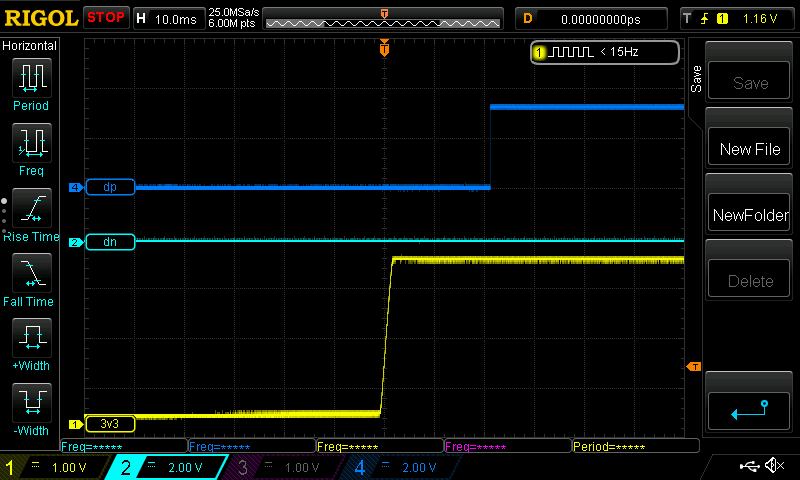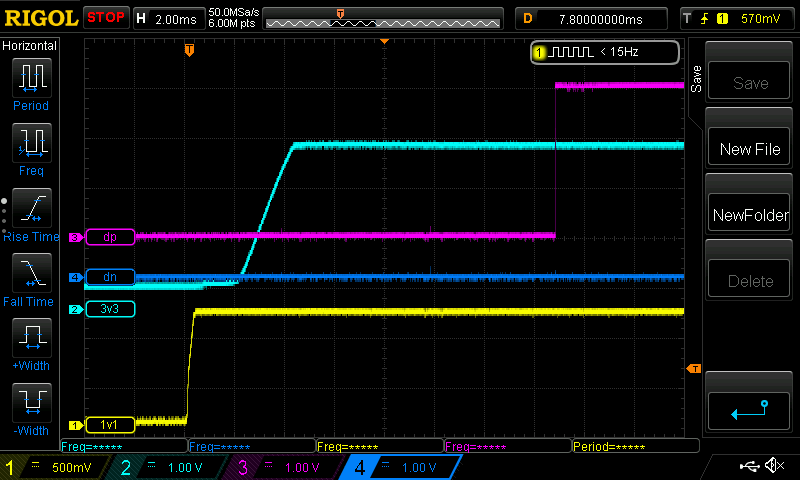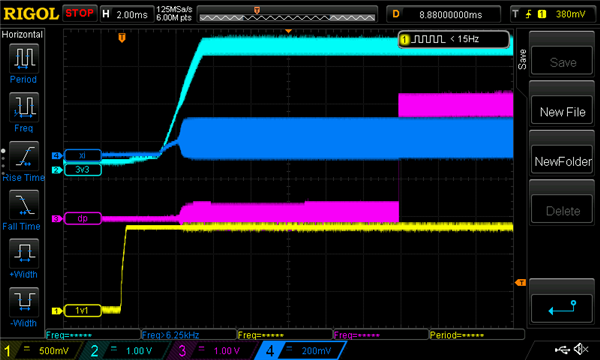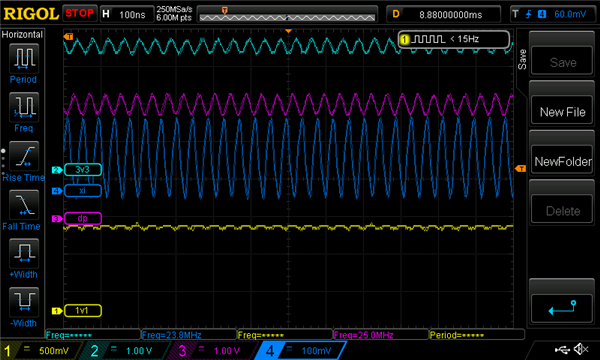We are currently having issues with the TUSB4020BI in our custom design. The device doesn't show up under the Device Manager in Windows, so it probably doesn't start.
This is our schematic:
These are the waveforms of the different power rails (and the USB_VBUS signal) during start-up:
Please note that we have already tried the following modifications, but they didn't help and the hub is still missing from the Device Manager:
- Increase the value of the C1220 to 1 uF (the oscilloscope plot above shows the GRSTn signal with this modification)
- Remove R1948 (SMBUSZ, pin 22 external pull-down resistor)
We also tried to connect the IC to the I2C bus to be able to manually set the cfgActive bit. However, the device corrupts the otherwise normally working bus after connecting. It keeps the SCL and SDA lines at around 1,6 V.
The oscillator is running (we can measure the 24 MHz clock signal) and the IC keeps the PWRCTL1 signal low as well.
Please note that as you can see we have a bypass option for this IC and if we use it then the USB port is working with no problems (so no P/N swap or anything like that).
We have two devices on the board with the same connections and both of them behaves the same.
Thanks for any help in advance.






